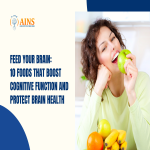- 21 Oct 2024
- Admin
Overview
Spinal stenosis refers to the narrowing of the spinal canal, leading to the compression of nerve fibers. The condition most frequently affects the lower back and neck regions.
Anatomy Related to Spinal Stenosis
- Spinal Cord: Central to the condition, as its space is constricted.
Types of Spinal Stenosis
There are primarily two classifications:
Lateral Stenosis: Also known as foraminal stenosis, this type involves the compression or inflammation of the nerves exiting the spinal cord.
Central Canal Stenosis: This type results in the compression of the spinal cord or the nerve sac, affecting the central canal.
Causes of Spinal Stenosis
Common contributors to spinal stenosis include:
- Degenerative Changes: Wear and tear of the vertebrae due to osteoarthritis can lead to bone overgrowth.
- Paget’s Disease: This condition causes abnormal bone growth and can deform spinal bones.
- Herniated Discs: Discs that bulge out can exert pressure on nearby nerves.
- Thickened Ligaments: Over time, ligaments may thicken and bulge into the spinal canal.
- Tumors: Though rare, abnormal growths in or near the spinal cord can restrict space.
- Spinal Injuries: Accidents can dislocate vertebrae, impacting the spinal cord and nerves.
Symptoms of Spinal Stenosis
Symptoms vary based on the location of the stenosis:
Lumbar Stenosis (Lower Back):
- Localized pain
- Sciatica (pain radiating from the buttocks down the leg)
- Numbness or tingling
- Weakness in the legs or feet
- Increased pain during activities like walking
- Rarely, loss of bladder or bowel control
Cervical Stenosis (Neck):
- Neck pain
- Weakness or numbness in the arms, hands, legs, or feet
- Pain radiating from the neck to the arms or shoulders
- Balance issues
- Difficulty with tasks like writing or buttoning a shirt
Diagnosis of Spinal Stenosis
Diagnosis typically involves imaging studies such as X-rays, MRI, or CT scans to identify changes in bone structure, narrowing of the spinal canal, damage to discs and ligaments, abnormal growths, nerve compression, and herniated discs.
Differential Diagnosis
Conditions that may mimic or accompany spinal stenosis include:
- Peripheral Vascular Disease: Issues with blood circulation.
- Cauda Equina Syndrome: Nerve compression at the spinal cord's base.
- Other Causes of Low Back Pain: Various non-specific factors.
Treatment Options for Spinal Stenosis
- Physical Therapy: Aimed at enhancing flexibility, balance, and overall mobility.
- Specific Exercises: Targeted routines like stretching and aerobics can strengthen spinal support muscles.
- Medications: Nonsteroidal anti-inflammatory drugs (NSAIDs) and pain relievers may alleviate discomfort.
- Surgical Options: If non-surgical methods do not yield sufficient relief, surgical decompression might be necessary.
Risk Factors:
- Age over 60
- Trauma
- Genetic conditions affecting bone and muscle development
- Congenital spinal abnormalities, such as short pedicles
Prevention of Spinal Stenosis
Primary Prevention: To minimize early onset, consider:
- Regular exercise to strengthen back-supporting muscles (activities like swimming, walking, and cycling).
- Maintaining a healthy weight to reduce stress on the spine.
- Practicing good posture.
Secondary Prevention: To further support spinal health:
- Sleep on a firm mattress.
- Use supportive chairs that align with spinal curves.
- Learn safe lifting techniques.
- Maintain spinal flexibility.
Epidemiology of Spinal Stenosis
Studies indicate that approximately 20% of the elderly population in India may suffer from spinal stenosis, with prevalence likely increasing due to rising obesity rates. Many individuals may remain undiagnosed due to asymptomatic presentations.
Expected Prognosis
The outlook for patients with spinal stenosis is generally positive. Many can find relief through various non-surgical approaches, while surgery may be beneficial for more severe cases.
Natural Progression
While symptoms of spinal stenosis can gradually worsen, they typically develop slowly. As pain intensifies or mobility decreases, non-surgical treatments may become inadequate, potentially necessitating surgical intervention.
Pathophysiology
Spinal stenosis involves spinal cord dysfunction stemming from nerve fiber compression and degeneration. Aging-related disc degeneration often leads to excessive bone growth, predominantly affecting the cervical and lumbar regions.
For comprehensive diagnosis and treatment options for spinal stenosis, consult with specialists at ANS Super Specialty Hospital.



















